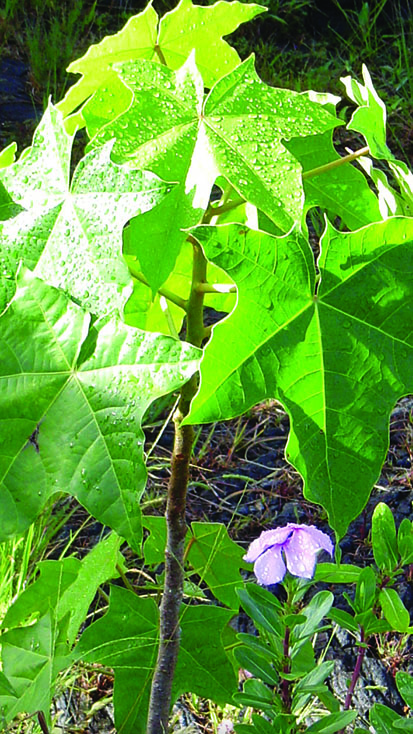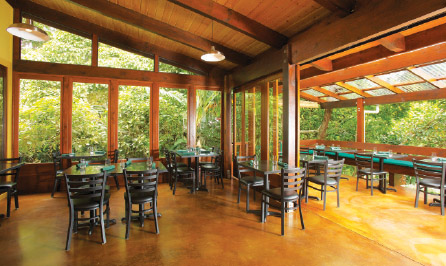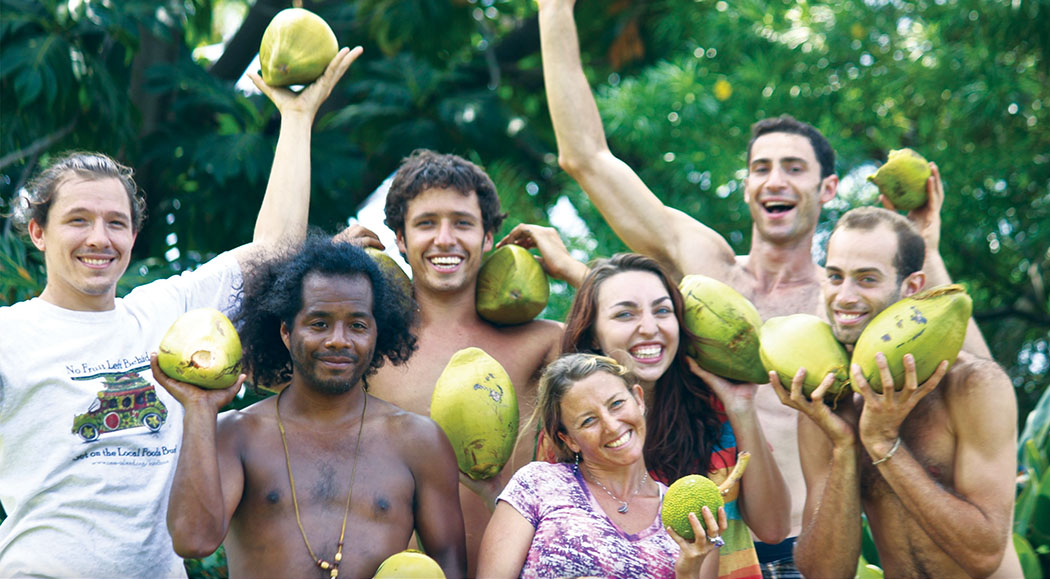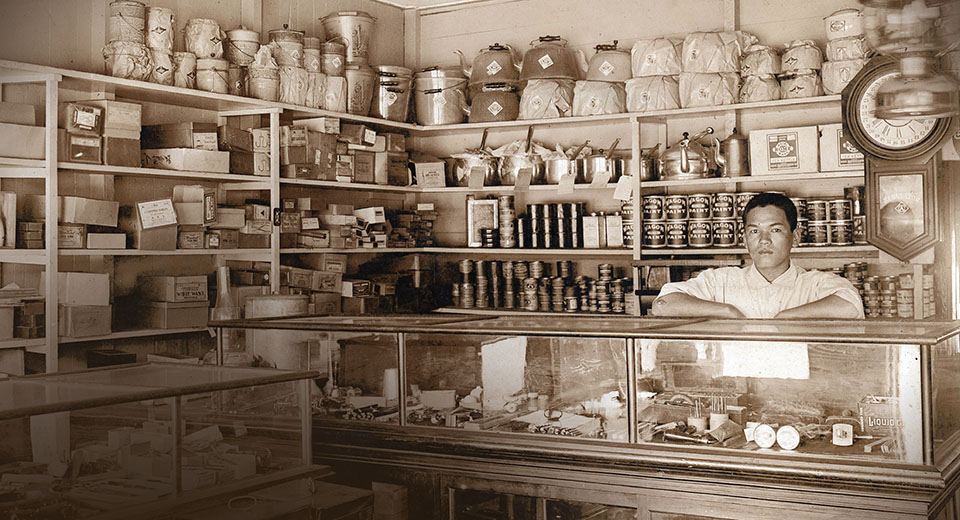
Kukui Nut Oil for Beautiful, Healthy Skin
By Barbara Fahs
 Polynesians of yesterday and today have beautiful skin. This could be due to their use of the oil from our state tree, the kukui, which their ancestors introduced to Hawai‘i around 1600 A.D. Kukui trees and the nuts they produce have many uses for health, beauty and lifestyles. The ancients used the oil to moisturize their skin and to protect it from the intense sun, salt water, and to assist in the healing of cuts, burns, insect bites and more.
Polynesians of yesterday and today have beautiful skin. This could be due to their use of the oil from our state tree, the kukui, which their ancestors introduced to Hawai‘i around 1600 A.D. Kukui trees and the nuts they produce have many uses for health, beauty and lifestyles. The ancients used the oil to moisturize their skin and to protect it from the intense sun, salt water, and to assist in the healing of cuts, burns, insect bites and more.
Probably originating in Malaysia, the kukui (Aleurites moluccana) is an attractive tree that can grow quite large — up to three feet in diameter and 60 feet tall. It has pale green leaves and reproduces freely, as do many nut trees. When a kukui tree begins producing its nuts at about the age of three, it’s difficult to harvest all the plentiful, oily nuts before they drop to the ground and sprout into a new tree. This explains why the kukui has successfully naturalized into widespread areas of Hawai‘i: check out Waimea Valley on Kaua‘i and Pelekunu Valley on Moloka‘i for examples of extensive groves of kukui trees.
Kukui means “light” in Hawaiian, which is why it is also called the candlenut tree. Containing up to 80 percent oil, the nuts were pressed to yield their oil, which was used as lamp oil. The nuts were also skewered on bamboo or the midrib of a coconut frond like a shish kebab (called a kalikukui) and then set ablaze. Sometimes a large torch called an ‘aulama was created when six to 10 kalikukui were bound together and enclosed in a sheath of ti leaves. Smaller torches called lama were made from a piece of bamboo stuffed with kukui nuts. Ancient Hawaiians also created stone oil lamps called poho kukui for their ali‘i — these used a strip of kapa, or tapa cloth, as a wick.
Kukui nuts and oil have many other uses as well. The nuts, although edible and quite tasty, are laxative and purgative, so beware that you don’t eat too many. If a person took too much kukui in old Hawai‘i and suffered from diarrhea, a preparation of arrowroot, or pia (Tacca leontopetaloides), was given with poi. When baked, ripe kukui nuts were crushed and applied to skin ulcers. Even the bark has been used in Hawai‘i, Tahiti, the Marquesas, Tonga and other Pacific islands: it was used for asthma and as a gargle for treating thrush, sore throats, tonsilitis and mouth sores. In Fiji, kukui oil is used topically to stimulate hair growth.
Kukui nuts served as a traditional tattoo material, with the residue of burned nuts mixed with oil or coconut water, into which sharp bird bones were dipped and then used to pierce the skin. Hawaii’s first surfers — the adventurous souls who invented the surfboard — rubbed this mixture into their boards’ wood grain and then applied several coats of kukui nut oil to provide waterproofing.
How to Grow Kukui

If you want a fast-growing tree that is capable of creating a grove or orchard of good-looking trees quickly, kukui is a good choice. It’s a great screen if you find your home suddenly surrounded by new homes or if you need protection from the wind. However, be certain to leave 20 to 25 feet between a kukui tree and your house.
From sea level to almost 4,000 feet in altitude, the kukui is a good choice for home gardens. You can purchase a kukui tree as a starter plant at local nurseries, or you can collect nuts from a friend’s tree. Don’t worry: the nuts will sprout and grow quickly and within one to two years you will have a tree that is several feet tall.
The kukui produces nuts twice each year. If you gather nuts, place them in a bucket of water and use only the nuts that sink. Soak those in hot water for five minutes before you plant them in a pot with a good quality potting mix. Keep the soil moist but not soggy; they can take three or four months to germinate. When the young trees are about six inches tall, transplant them to an area with a bit of soil (one to two feet is sufficient — they practically grow out of soild rock in some areas). Try to keep the soil in which they started intact. Dig a hole that is slightly larger than the rootball of the young tree and then stir in a bit of compost or well-rotted manure (chicken manure with straw is a good choice). Place your tree into the hole and then backfill it with the soil you dug out. Keep it watered for the first two months if rains don’t do the job. Fertilizer is unnecessary, but mulching with leaves of other plants can help keep the weeds away. Insects do not seem to bother kukui trees, but when the nuts drop to the ground they can become dinner for slugs, snails, rats and pigs. ❖
Making Kukui Nut Oil
Here’s how to make small amounts of kukui nut oil at home.
- Select nuts that sink in water.
- Crack nuts with a hammer, then remove the meat and place it in a nonstick baking pan.
- Heat your oven to 450˚ and then bake for 15 minutes.
- Let the mixture cool, and then mash it and place it in a glass jar.
- Cover the jar tightly and place it in the sun for up to two weeks.
- Pour off the oil and keep it refrigerated.
References:
- www.netstate.com/states/symb/trees/hi_kukui_tree.htm
- www.natural-elements-online.com/history-of-kukui-tree.asp
- Kepler, Angela Kay. Hawaiian Heritage Plants. Honolulu, University of Hawai‘i Press, 1998.
- Leonard, David Bruce. Medicine At Your Feet. Hilo, Hawai‘i, Roast Duck Producktion, 2007.
- Whistler, W. Arthur, Polynesian Herbal Medicine. Lawai, Hawa‘i, National Tropical Botanical Garden, 1992.


